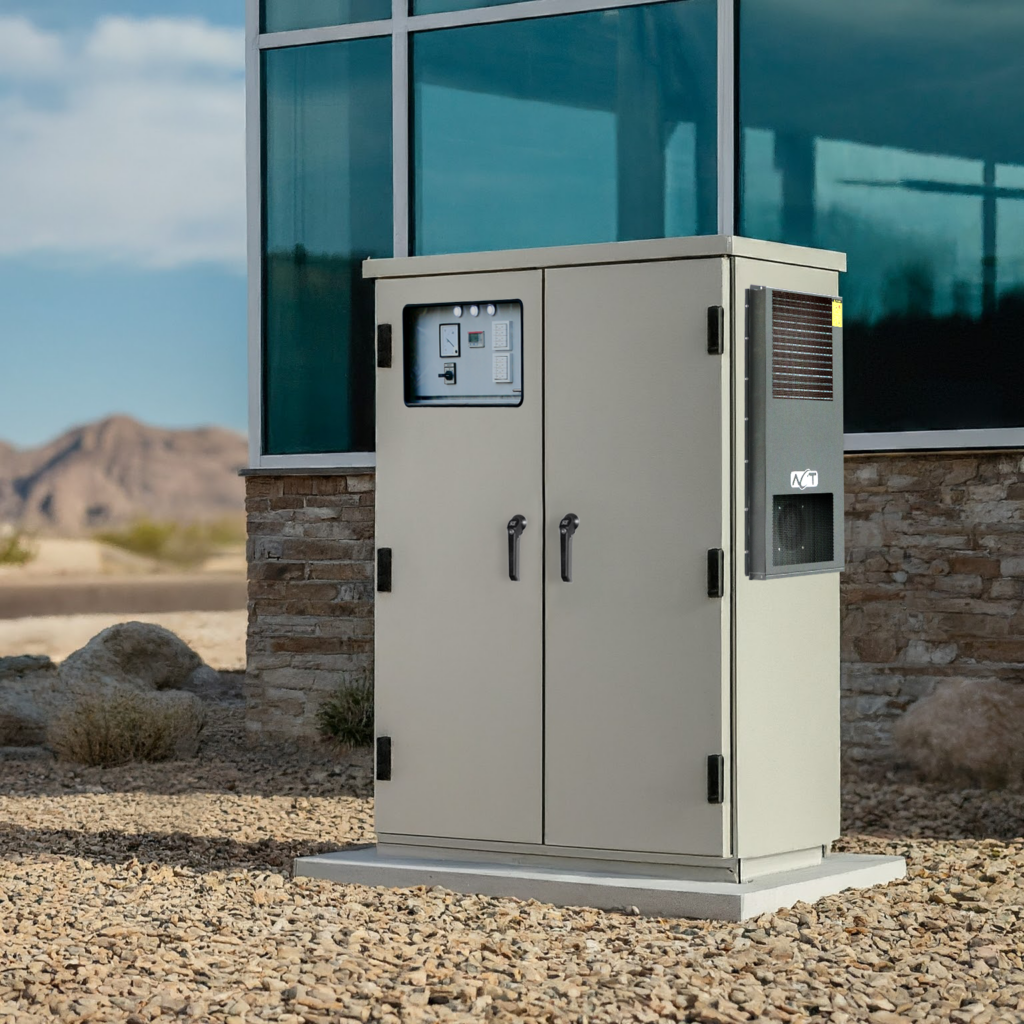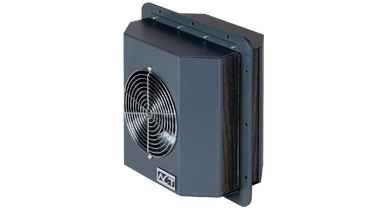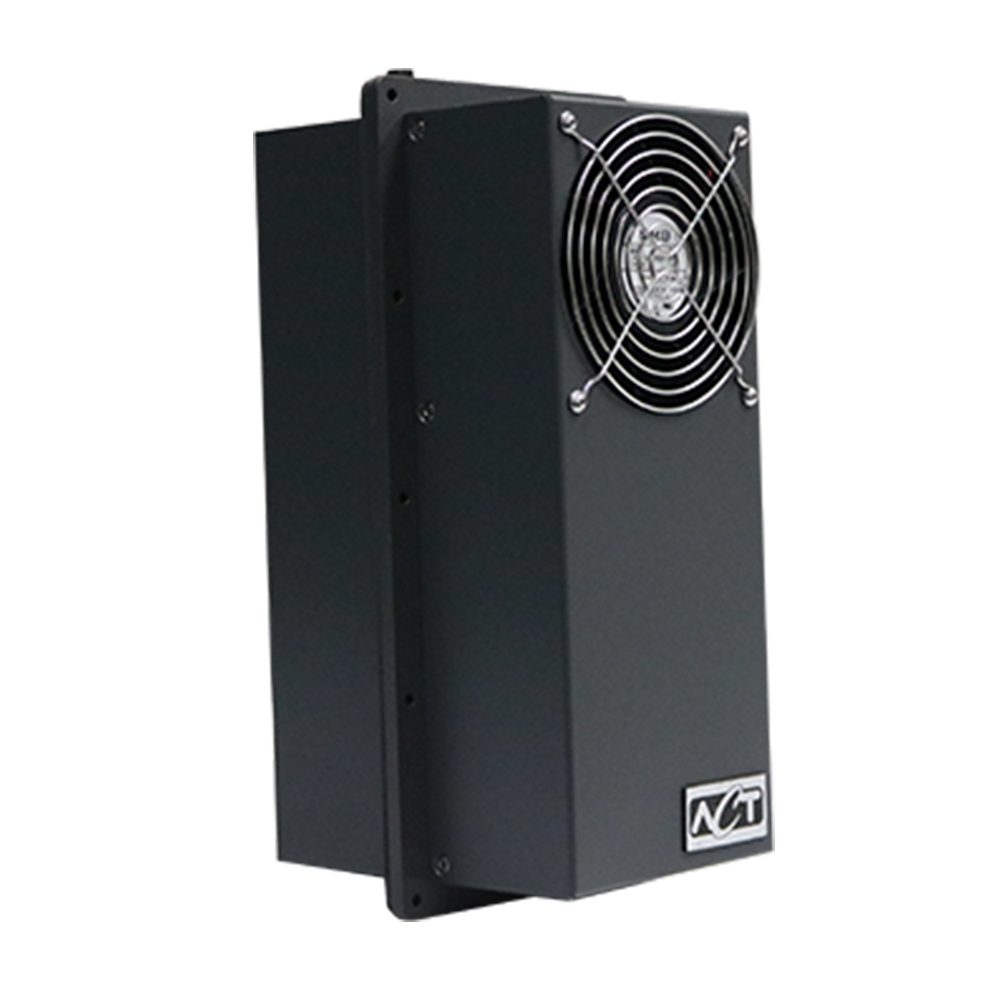Types of Sealed Enclosure Coolers & How They Protect Your Electronic Components
Electronic components like variable speed drives, servos, and programmable logic controllers generate considerable heat inside electronics cabinets. While these devices are robust, they can fail under stress. To prevent premature failures and enhance the cabinet’s reliability and lifespan, designers need a cost-effective cooling solution.
ACT’s cooling products feature a 100% sealed enclosure, providing reliable cooling for cabinets. Sealed Enclosure Coolers are designed to operate in various environments—indoor, outdoor, and more—effectively blocking heat, dust, humidity, water, and chemicals.
Why Cabinet Cooling Fans Are Not Enough

Heat isn’t the only factor that can hinder device performance. Dust particles, water, and even chemicals can impact a sealed enclosure cooler’s efficiency.
Fan coolers are usually the first choice for reducing internal cabinet air temperatures, but they are not always the most reliable because of the maintenance they require. While they filter out debris and dust particles, delayed replacement or infrequent removal of filters will restrict airflow over time.
Plus, cabinet fans don’t protect against water damage, which can be problematic in outdoor environments or spray-down situations. Instead, designers may opt to protect electronic components by placing them into a clean, completely sealed cabinet.
The sealed cabinet removes the threat of particles and other contaminants entering the airstream, but also creates a new problem: trapped heat. Without proper ventilation to remove excess heat, sealed electronics can reach damaging internal temperatures that hinder device function.
That’s where ACT’s advanced sealed enclosure coolers come in.
What Are Sealed Enclosure Coolers?
Sealed enclosure coolers help regulate the internal heat of sealed cabinets.
ACT’s heat pipe coolers, heat sink coolers, and thermoelectric air conditioners are equipped to regulate the temperature of sealed cabinets using a common base plate design, with no compressors or refrigerants needed.
Our models vary in cooling capacities and environment applications to meet your cabinet cooling needs. ACT’s experienced engineers can also design and build custom units for unique cabinet cooling requirements.
Types of Sealed Enclosure Coolers
Heat Pipe Coolers

As their name implies, ACT’s heat pipe coolers are designed using reliable heat pipe heat exchanger technology. The heat pipes are bonded with fins through a plate that maintains a sealed environment.
The heat inside the enclosure causes the working fluid inside the heat pipe to boil and the vapor moves along the heat pipe end to the outside of the cabinet.
The vapor then condenses and travels back inside the cabinet to repeat the cycle and maintain optimal internal operating temperatures. This heat exchange technology has 1000 times better conduction than a solid copper rod.
Heat Sink Coolers
ACT’s passive sealed heat sink coolers are configured using 2 advanced high-performance aluminum-finned heat sinks bonded to opposite sides of a common heat transfer mounting plate.
Via natural conduction, excess heat from inside of the enclosure enters the heat sink and moves away from the source. The working fluid — in most cases air or a non-conductive liquid — then utilizes convection to discard the heat into the ambient air.

Thermoelectric Air Conditioners

ACT’s thermoelectric air conditioners were developed for sub-ambient conditions (when the outside temperature is slightly higher than the desired inside temperature of the cabinet).
Unlike other sealed enclosure coolers, thermoelectric coolers can operate without any compressors, refrigerants, or circulating liquids. Instead, they are made up of 3 primary components — thermoelectric modules, heat sinks, and a power supply — that use highly reliable Peltier cooling as the basis of design.
This effect, discovered by Jean Peltier in 1834, achieves heating or cooling through the heat differential that occurs when a DC voltage is applied. As the electrical current hits the thermoelectric modules, heat is moved from one side to the other, creating a “hot” and “cold side” of the circuit.
When mounted on a sealed electronic cabinet, the thermoelectric air conditioner absorbs and transfers the excess heat from within the cabinet to the opposite plate, where the heat is dispelled into the ambient air.
Overall, they’re great for applications where low vibration is required, such as medical or military applications.
Explore ACT’s NEMA-Approved Products
All sealed enclosure coolers come in NEMA Rating options of 12, 3R, 4, and 4X, providing options for corrosive and wet environments. They are used in diverse industries such as industrial automation, food processing, chemical, petrochemical, wastewater treatment, and telecommunications.
If you’re a cabinet designer tasked with cooling your electronics components, consider one of ACT’s cabinet cooling solutions to keep your sealed cabinet cool and clean without breaking the budget.
Not sure which enclosure best fits your cabinet cooling needs? Try our easy-to-use enclosure cooling selection tool.


